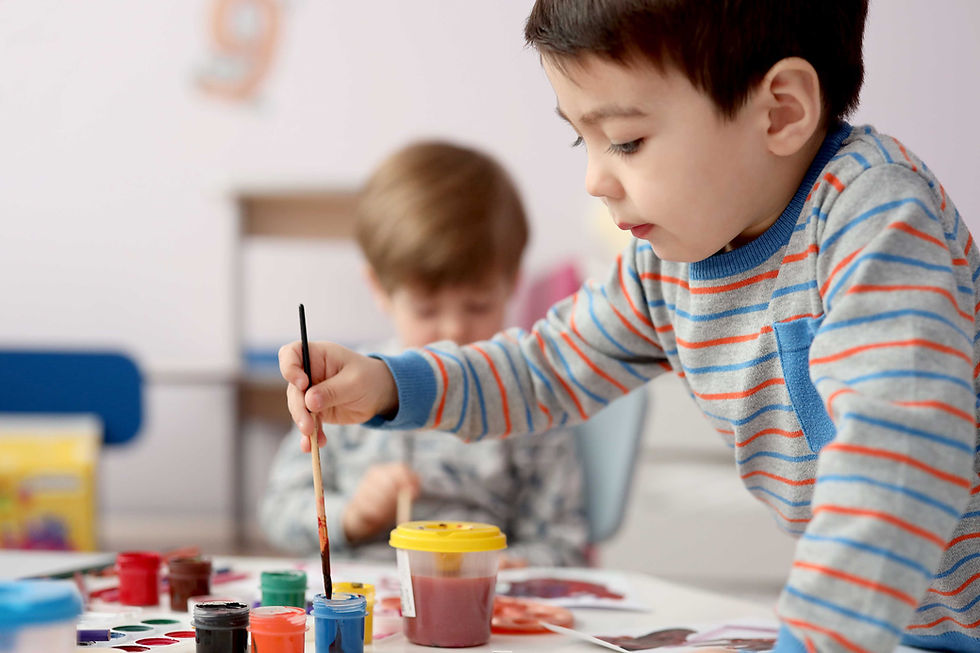Why Creativity Is a Predictor of Success — And How to Build It Daily at Home
- Manpreet Kaur
- 7 days ago
- 3 min read
TLP BLOG
Creativity isn’t just an “art skill” — it’s a predictor of confidence, problem-solving, leadership, and academic success. Here’s how to nurture it at home.
Date: December 1, 2025
Most parents think creativity comes from art projects, coloring books, or the “creative kids.” But research tells us something far more powerful:
Creativity is one of the strongest predictors of long-term success — academically, socially, and professionally.
And here’s the surprising part: Creativity isn’t a talent. It’s a skill any child can learn with the right environment.
During the holiday season, when kids finally slow down and families reconnect, you have the perfect window to spark creativity at home.

Every great guide should start with an introductory paragraph. This is your opportunity to persuade your reader and let them know why this post will answer all their important questions. You can share why you are the ideal person to write this guide; write a personal anecdote about how you became an expert in the field; show your empathy with your reader regarding how hard it is to find accurate information; and/or stress the frequent mistakes people make that can be avoided.
Before writing your “how-to” or “best-of” post below, add one last sentence that sums up your paragraph and offers a polished transition to your guide.
Some Quick Guidelines on Formatting
Don’t make your guide longer than 2000 words. In an ultimate guide, you also have a lot of space to use your SEO keywords. Put 2-3 keywords around in the post, in the H2 headings, and in the text itself. Add Anchors Links much like a table of contents where readers can click and go to a section of the post. To add them, click on Link in the toolbar above, select Section and select one of the headings in the post.
Why Creativity Matters More Than We Think
Creativity builds the skills that matter most in life:
1. Creativity strengthens problem-solving
When kids think of new ideas, they’re actually learning flexibility — a core executive function skill.
2. Creativity boosts literacy
Drawing, storytelling, pretend play — all of these strengthen visualization, vocabulary, and narrative structure. This directly improves both reading and writing.
3. Creativity improves communication
Kids learn how to express ideas clearly, confidently, and with detail — the foundation of strong public speaking.
4. Creativity builds confidence
When children create something from nothing, they experience autonomy and pride — powerful fuel for self-esteem.
5. Creativity future-proofs your child
The top global predictors of success are: innovation, communication, adaptability, and leadership. Creativity feeds all four.hem as Heading 2 or Heading 3.
How to Build Creativity Into Daily Life (Takes 5 Minutes)
1. Ask open-ended questions
“What else could we try?” “What would happen if…?”
Open questions = open minds.
2. Add a “creative break” after school
Not screen time — exploration time. Drawing, LEGO, journaling, storytelling, building, sketching.
3. Encourage storytelling at home
Ask your child to tell you a silly story about their day — with one twist (a magical object, an unusual character, a problem to solve).
4. Give them space to be bored
Boredom is the birthplace of creativity. Don’t rush to fix it — let imagination step in.
5. Celebrate ideas, not perfection
The goal is not beautiful work. The goal is brave thinking.
A Creative Challenge for December
Have your child create one thing a day: A drawing, a sentence, a story, a doodle, a building, an idea, a new word.
One creative spark → lifelong confidence.
Want to grow your child’s creativity and writing skills?
Explore our Creative Writing Program and Elementary Writing Program — designed to strengthen imagination, communication, and literacy together.